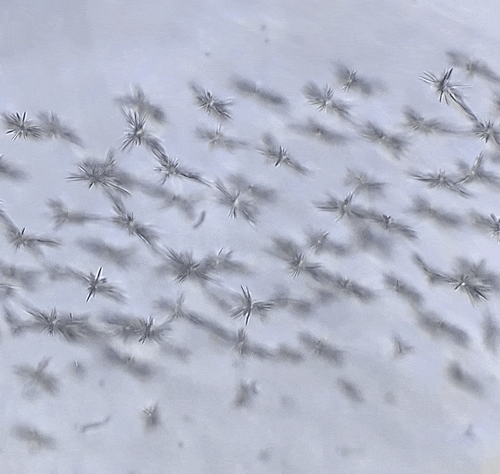Conventional and Phased Array UT
Our specialized crystal glass has acoustic properties similar to carbon steel. This means you can use any off the shelf probes and wedges on Optiflaw samples!
Flaws you can actually see with your own eyes make for a powerful training tool. A technician can see the flaw in the sample while evaluating it with their UT instrument, training their brain what to look for when dealing with specific orientations or profiles. This is a major advantage when teaching difficult-to-characterize defects such as hook flaws and SCC.
After technicians practice on clear samples, they can move on to opaque samples to test their skills. Opaque samples feature a thin layer of thermally bonded paint, resulting in a durable coating that does not affect impedance or thickness readings.
Re-think the way you approach:
-
Training
-
Technician Validation
-
UT Technique Development
-
UT Technique Validation
-
Flaw Interaction Studies
-
And more

Perfectly Repeatable
Unlike traditional artificial samples, our flaws are CAD drawn and re-produced with laser precision. This means you can have a class full of technicians all working on flaws that are perfectly identical to what the instructor is demonstrating. Imagine the possibilities for remote training!
How does it work?
1. The glass blank is machined using specialized equipment to create the desired geometry.
2. A flaw map is CAD drawn in-house to meet client specifications.
3. A sophisticated laser focusses it's energy to a point within the glass creating a tiny fracture only 40µ in width. It combines millions of these points to "draw" the desired shapes in the glass.
4. The spacing between points is so small (< 80µ) that ultrasound interacts with the "point cloud" as if it were a solid feature
5. By controlling the size of the micro-fractures and density of the point cloud we can fine tune how reflective or transparent to ultrasound the feature is.
6. If desired, an opaque coating is applied using a thermal bonding process.

A microscopic view of the point cloud.
Specifications
Material
Longitudinal Wave Velocity
Shear Wave Velocity
Acoustic Impedance (Z)
Material Density (ρ)
Isotropic
Flaws Types Available
Geometries Available
Proprietary Crystal Glass
.2306 in/µs
.1385 in/µs
14 Mrayls
2.51 g/cm3
Yes
Porocity
Slag
Inclusions
Laminations
ID/OD Cracks
Embedded Cracks
Incomplete Penetration
Lack of Fusion
Hook Flaws
Stepwise Cracking
HTHA*
SCC*
Flat Plate
100˚ Pipe Segment
Weld Crowns and Roots
Flash Weld Crowns
Under/Over Trim
Longitudinal Welds
Circumferential Welds (flat plate only)**
Maximum Dimensions
Plate Thickness
Pipe Segment Thickness
Pipe Segment Diameter
12x12"
0.150 - 4.000"
0.150 - .375"
6 - 16"**
* Under development
** More options coming soon



